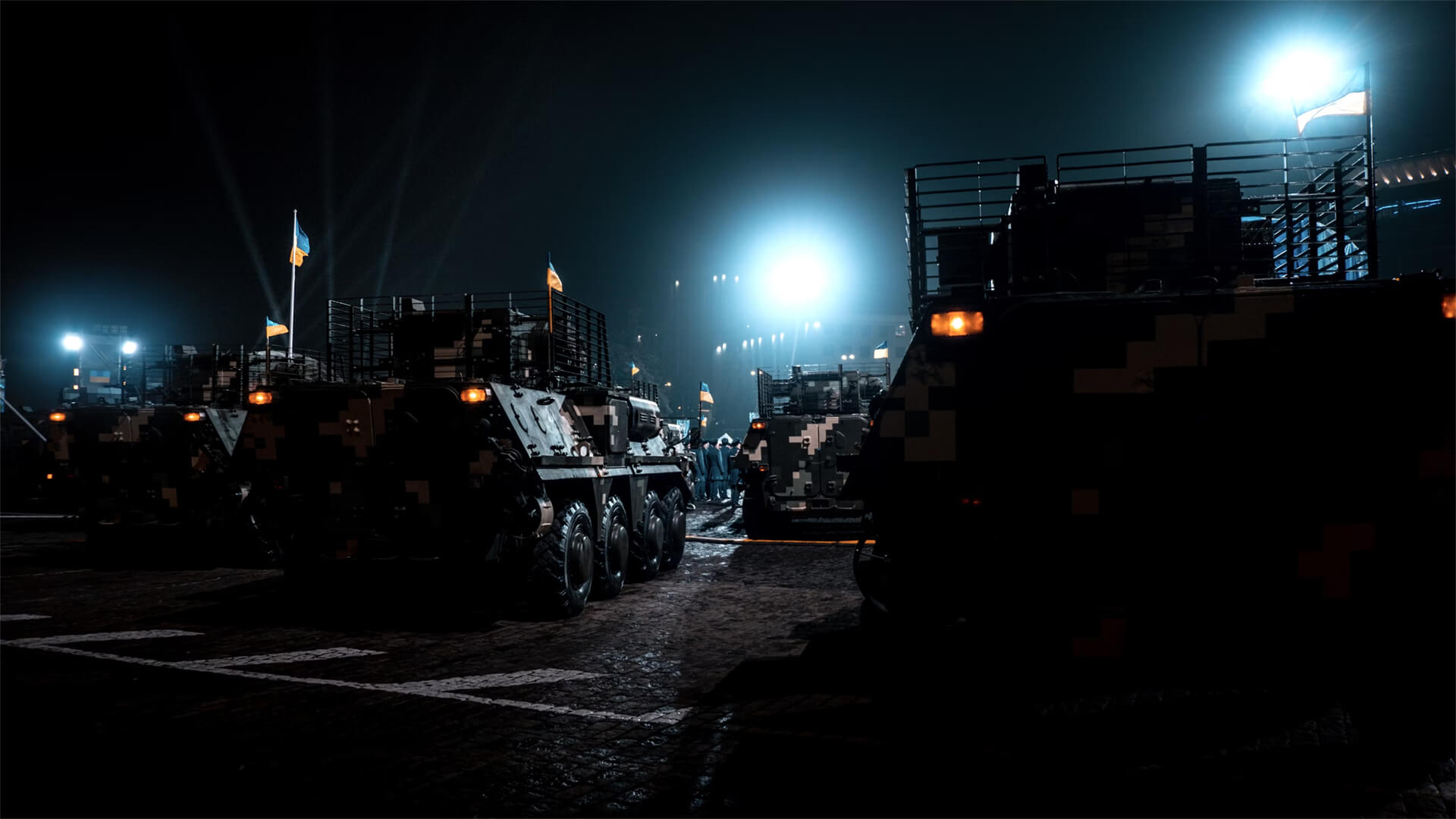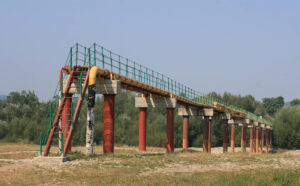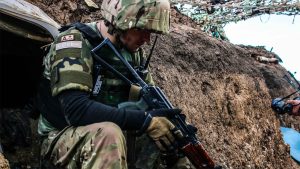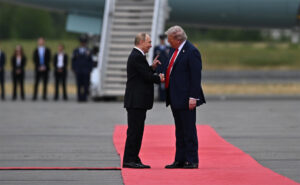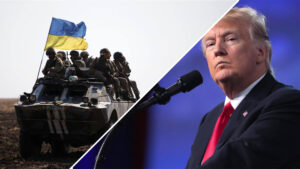There are lots of moving parts in the Ukraine War right now, so let’s do a little recap of everything that’s going on. There are four big ones…
First up is the Ukrainian Offensive in Kursk. One of my recent videos covered this in more detail, but essentially the Ukrainians have poked into Russian territory and caused significant Russian casualties, destroyed a number of bridges, and cut off key supply lines. They are also bringing some heavy artillery and equipment along with them that will impact the front lines.
Next, the Ukrainians sunk Russia’s last rail ferry. This was a critical piece of transport for the Russians and was one of the few things keeping their supply lines to Crimea open. This is a big win for Ukraine as it will weaken Russia’s position in the Crimean front.
Third is the destruction of a major fuel depot in Russia. A Ukrainian attack set about a third of the storage tanks ablaze at a depot in the Proletarsk district. This fire is still spreading and could cause major setbacks for the Russian forces in Crimea that depend upon this fuel.
Last is the Russian assault on Pokrovsk. While the Ukrainians are seeing big wins across many fronts, they are facing heavy pressure from the Russians in the city of Pokrovsk in the Donbas. The Russians are seeking control of this nexus city, as it would complicate Ukrainian supply lines in the region.
Like I said, lots of moving parts…but that means there’s a potential for significant changes. So, stay tuned for further updates.
Here at Zeihan On Geopolitics we select a single charity to sponsor. We have two criteria:
First, we look across the world and use our skill sets to identify where the needs are most acute. Second, we look for an institution with preexisting networks for both materials gathering and aid distribution. That way we know every cent of our donation is not simply going directly to where help is needed most, but our donations serve as a force multiplier for a system already in existence. Then we give what we can.
Today, our chosen charity is a group called Medshare, which provides emergency medical services to communities in need, with a very heavy emphasis on locations facing acute crises. Medshare operates right in the thick of it. Until future notice, every cent we earn from every book we sell in every format through every retailer is going to Medshare’s Ukraine fund.
And then there’s you.
Our newsletters and videologues are not only free, they will always be free. We also will never share your contact information with anyone. All we ask is that if you find one of our releases in any way useful, that you make a donation to Medshare. Over one third of Ukraine’s pre-war population has either been forced from their homes, kidnapped and shipped to Russia, or is trying to survive in occupied lands. This is our way to help who we can. Please, join us.
Transcript
Hey, everyone. Peter Zeihan here, coming to you from Colorado on a somewhat gloomy Saturday. This is the Geneva Basin behind me, and I am standing on the crest of Geneva Mountain. Today, we’re going to catch you up on everything that’s going on in Ukraine. We’ve got four big developments that have evolved over the last couple of weeks. The first one we’ve already discussed quite a bit.
And that is the Ukrainian offensive through their northern border into Russia proper, into the Kursk province, where they’ve triggered a war of movement with the Russians. From everything we can tell, the Ukrainians are taking heavy casualties, but the Russians are taking just absolutely astronomical casualties because the Ukrainians have destroyed the bridges across the river.
So, the Russian forces that are south of the river and north of the Ukrainian border are just getting chopped up without any support, and the Ukrainians are apparently having a pretty good time of it. They’ve also brought a lot of their longer-range missiles, mortars, and drones very, very close to the border itself and are launching them at targets up to 100 miles within Russia proper, gutting the logistics, infrastructure, and everything in the southern and western parts of Kursk province. Basically, the entirety of the northern front of the Ukraine war has now been relocated into Russian territory. This is a significant change in battlefield realities, and if the Ukrainians can keep this up, they’ll be able to cut the infrastructure between Kursk city and Belgorod city, which is how all Russian forces have been supplied for the northern front.
So, this is very significant and has the potential to become much more so in the days and weeks to come. The second big development is that the Ukrainians have successfully sunk Russia’s last rail ferry. Now, for those of you who haven’t been watching for a while, the primary means that the Russians have been using to supply their forces in the Crimean Peninsula, in the south of Ukraine, has been the Kerch Strait Bridge.
But after a series of attacks on it over the last two years, the cargo function of the bridge has basically been shut off. They can ship personnel in, but no cargo, so no fuel. So, they’ve been using rail ferries to go from the Black Sea coast of Russia into Crimea in occupied territory. Well, the Ukrainians a few months ago started targeting the rail ferries, and this last week, the final one was hit while it was at dock in port.
It sank in its berth. So even if the Russians had the equipment and personnel to clear it—which it’s unclear that they do—they’re talking about an operation that would probably take a minimum of a couple of months. And even if they cleared it, they have no more rail ferries, and no one will sell them any.
So, this has basically destroyed the capacity of the Russians to ship fuel to the Crimean front. The third thing involves the city of Prohodytsk—probably mispronouncing that. Anyway, that is a city further inland, closer to the Russian border, and it’s a major fuel depot. There are 74 of those giant tanks that you see outside of refineries all over the area.
So far, the fire that the Ukrainians triggered with this attack has been so intense that it has completely destroyed a third of the tanks, and it’s spreading to the rest. Once again, even if the Russians had the equipment and personnel necessary to fight the fire—which they don’t—it’s, I don’t want to call it out of control, but the Russians are barely holding the line. The Ukrainians have not let up; they’ve launched at least a couple more attacks since then. There’s a very real possibility that this entire depot, by far the biggest and most relevant one to the Prohodytsk front, is not going to be there a couple of weeks from now.
So, not only is fuel delivery now out of the equation, but fuel storage and forward positioning also seem to be going offline permanently as well. That would normally open up a huge opportunity for the Ukrainians to press the Crimean front because the Russian soldiers in Crimea are kicking for reinforcements, more ammunition, and supplies.
But that brings us to the fourth problem, which is absolutely not going the Ukrainians’ way, and that is the Russian assault on the Ukrainian city of Pokrovsk—emphasis on the “krovsk.” That is in the Donbas, actually not too far from one of the regional capitals. Basically, what’s going on here is that the Russians have decided that they have to take this city at any cost, and they’ve been launching literally dozens of assaults against Ukrainian forces every single day for the last month.
And as the Russians are scrambling to move forces north into Kursk or south towards Crimea, they have not pulled anything out of the Pokrovsk front. Now that they can’t get fuel to Crimea, there is an argument to be made that the Russians might not even bother trying to send reinforcements to Crimea in the short term. Instead, they’ll send everything to Pokrovsk because if Pokrovsk falls, it’s a major problem for the Ukrainians. It’s a real nexus where several supply lines come together.
If it is taken out, it’s not that the Ukrainians can’t supply the front in the Donbas, but instead of having a single point where they can concentrate their forces and build for a pushback, they’ll have to do it from several different points that require a lot of rerouting.
That won’t be nearly as effective and will be much easier for the Russians to disrupt. The Ukrainians have always been trying to make this area work, while the Russians have always tried to put more pressure on it. One of the reasons why the Ukrainians have managed to secure this area so far is that there are no minefields up there, so they’re free to maneuver.
But if Pokrovsk falls, the Ukrainians are going to be running around just trying to hold the front at several different places, making the reinforcement problem even worse. So, there are a lot of decisive things going on here. Kursk is in play, Crimea is in play. If the Ukrainians can find some reserves to free up, those are now, of course, going to be contested.
We’re probably going to see more changes in the front line in the next few months than we have seen in the last couple of years. Very, very dynamic situation, very unclear. I think that’s one aspect to keep in mind here because we have three different factors at play.

